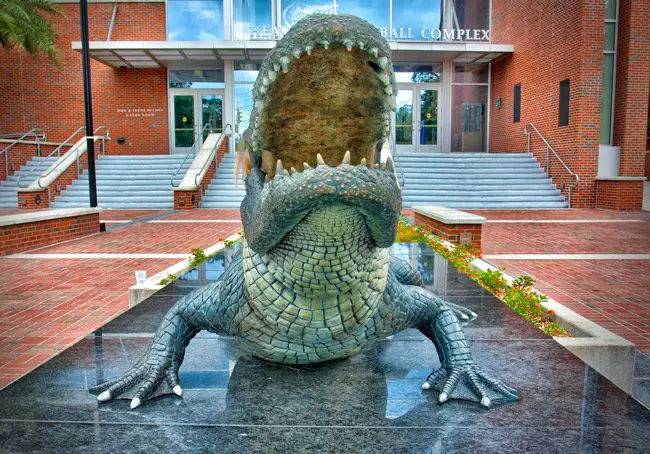
Florida universities continued their academic climb in the latest U.S. News & World Report annual college rankings, placing five schools in the country’s top 100 public universities for the first time.
The 2019 rankings, which were released Monday, included:
— The University of Florida moved from No. 9 to No. 8 on the list, continuing its quest to become one of the top five public research universities.
— Florida State University jumped seven spots to No. 26, just outside its goal of reaching the top 25 public universities.
— The University of South Florida, recently designated by the state as a “preeminent” research university, improved to No. 58, up 10 spots from last year.
— The University of Central Florida was ranked at No. 87, compared to No. 90 last year.
— Florida International University recorded the largest statistical climb, reaching No. 100 among public research universities, up 22 spots from last year.
In other U.S. News rankings, New College of Florida improved to No. 5 on the list of public liberal-arts colleges and improved 11 spots to No. 90 among all public and private liberal-arts schools.
Florida A&M University was ranked No. 9 among public and private historically black colleges and universities, a decline from last year’s No. 6 ranking. The school was ranked second on the list of the top public HBCUs.
The closely watched U.S. News rankings are based on 15 measurements aimed at evaluating the academic quality of the institutions. The measures include graduation rates, retention rates, class sizes, peer reputation and faculty resources.
For the first time this year, the rankings included a “social mobility” factor that measures the performance of students who receive Pell Grants. The federal grants are awarded to students who have annual family incomes below $50,000, with most below $20,000.
The performances of Pell students, who constituted 38 percent of the systemwide enrollment in Florida in the fall of 2016, was one of the factors that helped the state schools rise in the national rankings.
Its largest impact may have been at Florida International, where more than 50 percent of students are on Pell grants. FIU was the only Florida school where the Pell students had a higher six-year graduation rate, 57 percent, compared to non-grant students, 56 percent.
“Our improvement demonstrates that our focus on student success — timely graduation and preparation to take or create great jobs — is making a difference for our students and their families,” FIU President Mark Rosenberg said.
Florida State University reported a 77 percent six-year graduation rate for its Pell students, ranking it No. 22 among public research universities.
“That’s the story of FSU,” Provost Sally McRorie said. “We are creating an environment where everyone can succeed because we provide the kinds of resources that can help people not only find their path but also provide them lots of support and challenges to be better.”
The University of Florida reported an 85 percent six-year graduation rate for its Pell students, the highest in the system.
The rise in the national rankings dovetails with efforts by the Legislature, with backing from Gov. Rick Scott, to increase funding for the university system, while keeping tuition low and expanding need- and merit-based aid for students.
At the same time, much of the new funding is tied to performance standards, developed by the system’s Board of Governors, including measuring graduation and student-retention rates, which are also key metrics for the U.S. News evaluation.
One impact of the funding increases has been the ability of the universities to hire more faculty, which, in turn, helps reduce class sizes and increases research activity.
The University of Florida has hired 100 new faculty through “preeminence” funding since 2013 and has hired another 200 faculty as part of an initiative announced last year, the school reported. In the U.S. News evaluation, UF has improved its student-to-faculty ratio from 20-1 to 19-1.
“The newest rankings are confirmation that we are making good choices and investing in the right places,” UF President Kent Fuchs said.
Florida State University had 240 new faculty members this fall and has improved its student-to-faculty ratio to 22-1, compared to 25-1 two years ago, the school reported.
Although the U.S. News rankings have their critics, the annual report highlights performance trends over time.
In the case of the University of South Florida, the reports have underscored a steady improvement, with the latest rankings showing an increase of 36 spots among public research universities over the last half-dozen years.
“USF is pleased to see significant gains in our national reputational scores,” said Ralph Wilcox, the USF provost and executive vice president.
–Lloyd Dunkleberger, News Service of Florida




























Born and Raised Here says
All my kids, parents, grandparents, including myyself went to college here in Florida, and graduated. Nothing better than a college degree from a Florida college.